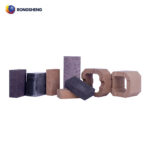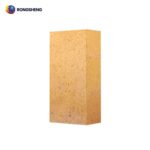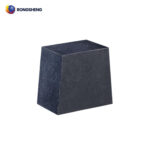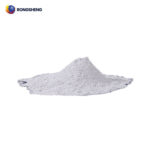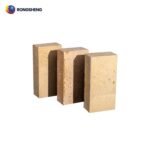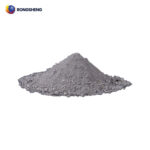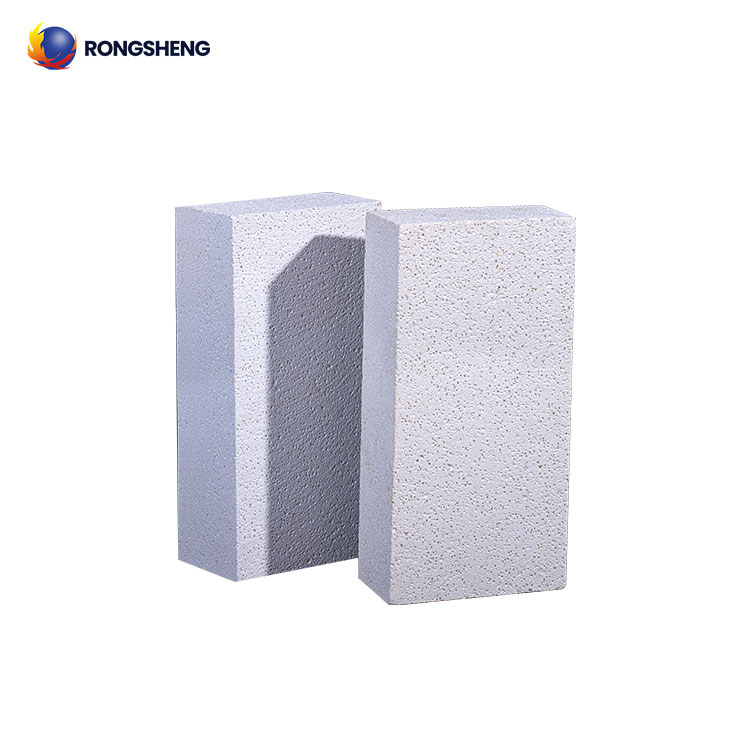
Mullite Insulation Bricks
- Low thermal conductivity. It has a good thermal insulation effect.
- Mullite insulation bricks have low heat melting.
- Low impurity content. the refractoriness is high.
- high compressive strength in a hot state.
- Accurate appearance and size.
- Mullite insulation bricks can be processed into special shapes.
We are Here to Help!
Email: sales@hy-refractory.com
WhatsApp: +86 185 3831 2977
High-temperature mullite insulation bricks are high-alumina refractory materials with mullite (3Al2O3·2SiO2) as the main crystal phase. Generally, the alumina content is between 65% and 75%. In addition to mullite, the mineral composition with lower alumina also contains a small amount of glass phase and cristobalite; the higher alumina content also contains a small amount of corundum. Rongsheng refractory bricks for sale, Mullite insulation bricks can be directly used for the lining of high-temperature kilns. It has been widely used in shuttle kilns, roller kilns, glass, and petrochemical kilns. RS Mullite Insulating Fire Bricks.
Product Characteristics of Mullite Insulation Bricks
- Low thermal conductivity. It has a good thermal insulation effect.
- Mullite insulation bricks have low heat melting. Due to the low thermal conductivity, the mullite series lightweight insulation bricks accumulate little heat energy, and the energy-saving effect is obvious in intermittent operation.
- Low impurity content. It has very low iron and alkali metal oxide content. Therefore, the refractoriness is high. The higher aluminum content makes it maintain good performance in a reducing atmosphere.
- Mullite thermal insulation brick has a high compressive strength in a hot state.
- Accurate appearance and size. It can speed up masonry and reduce the amount of refractory clay used. Ensure the strength and stability of the masonry, thereby extending the life of the lining.
- Mullite insulation bricks can be processed into special shapes. In order to reduce the number of bricks and joints.
Classification of Mullite Insulation Bricks
According to different density, mullite insulation bricks are mainly divided into light and heavy mullite insulating bricks.
According to different operating temperatures, it is mainly divided into 1350 mullite insulation bricks, 1450 mullite insulation bricks, 1550 mullite bricks and so on.
The performance of mullite insulation bricks. The refractoriness is high, up to 1790℃ or above. The starting temperature of load softening is 1600~1700℃. Compressive strength at room temperature is 70~260MPa. Good thermal shock resistance.
RS Mullite Insulation Bricks
The Performance of JM28 Mullite Insulation Brick
Rongsheng JM28 mullite insulation bricks can be used as a backing and heat insulation layer for hot surface refractory fabrics or other refractory materials. Used in smelting furnaces, firing kilns, flues, refining equipment, heating equipment, regeneration equipment, gas generators and pipelines, soaking furnaces, annealing furnaces, reaction chambers and other similar industrial thermal equipment.
JM28 Mullite Insulation Brick Production Method
1. The foaming method is used to make light-weight mullite bricks by mixing foaming agent, stabilizer and water in a certain proportion. Firstly, it is made into foam liquid, and then mixed with the slurry, and then processed by casting, maintenance, drying, baking and firing. Made into lightweight mullite bricks with high porosity. Using this method to produce high-quality lightweight mullite bricks requires many processes and is more complicated. The production cycle is long, the production success rate is low, and the cost is high.
2. The production of light-weight mullite bricks by adding substances burning method is to add some combustible substances to the ingredients, such as wood chips, polystyrene, coke, etc. When the bricks are fired, the combustible additions are burnt quickly, and the position of the additions becomes pores. This kind of brick with high porosity and low density is called lightweight mullite brick. The process for producing mullite insulation bricks has simple process, short production cycle, low cost and high production power.
There are three molding methods for the production of lightweight mullite bricks by adding material burning method. Shaking, pouring, and ramming by hand. Oscillation molding produces lightweight mullite bricks with short cycle times and high production power, but the quality, especially the density, is difficult to control. Pouring molding cycle is long, production power is low, cost, and mold cost is high. Manual ramming has low output power, low cost, high labor intensity, and difficult quality control.
3. The gasification method produces light-weight mullite bricks, which refers to the substances that can induce gas in the ingredients and can play a chemical role. Use chemical methods to obtain bubbles, resulting in bricks with high porosity and low density. The production process of this method is simpler than the foam method, the production cycle is longer, the cost is higher, and it is rarely used in practice. According to the practice of the special refractory material plant, the final choice of adding material burning method to produce lightweight mullite bricks.
RS Best Mullite Bricks Manufacturer
Bulk Density of Lightweight Mullite Insulation Bricks
The bulk density of common lightweight mullite insulation bricks is 0.6-1.2g/cm3. The bulk density of heavy mullite refractory bricks is 2.3-2.5 g/cm3. There is no fixed standard for the volume density of mullite bricks, and the actual standard is based on customer needs.
The volume density of mullite refractory bricks is a comprehensive reflection of the volume of pores and mineral composition in mullite bricks. Because it is easier to measure, it is usually used as a method to judge the degree of sintering of mullite bricks in production. The factors affecting the bulk density of mullite refractory bricks are as follows: One is the bulk density of the alumina content of mullite bricks and the size of alumina particle size. Another aspect is the control of the production process. Therefore, in the production of mullite refractory bricks, it is necessary to strictly screen the grade of raw materials and control the particles. In the production process, the pressure of the brick press to press the bricks is controlled, and the firing of mullite refractory bricks is reasonably controlled.
Mullite Insulation Brick Technical Data
| Rongsheng Mullite Insulation Bricks | |||||
| Items | MU 60 | MU 65 | MU 70 | MU 75 | |
| Chemical Composition | Al2O3 | ≥60 | ≥65 | ≥70 | ≥75 |
| SiO2 | ≤35 | ≤33 | ≤26 | ≤24 | |
| Fe2O3 | ≤1.0 | ≤1.0 | ≤0.6 | ≤0.4 | |
| Bulk Density g/cm3 | ≥2.55 | ≥2.55 | ≥2.55 | ≥2.55 | |
| Permanent Linear Change On Reheating (%) 1500℃X2h | 0~+0.4 | 0~+0.4 | 0~+0.4 | 0~+0.4 | |
| Apparent Porosity % | ≤17 | ≤17 | ≤17 | ≤18 | |
| Thermal Conductivity (W/MK) 1000℃ | 1.74 | 1.84 | 1.95 | 1.95 | |
| Cold Crushing Strength Mpa | ≥60 | ≥60 | ≥80 | ≥80 | |
| 20-1000℃ Thermal Expansich10-6/℃ | 0.6 | 0.6 | 0.6 | 0.55 | |
| 0.2Mpa Refractoriness Under Load T0.6 ℃ | ≥1580 | ≥1600 | ≥1600 | ≥1650 | |
| Thermal Shock Resistances 100℃ water cycles | ≥18 | ≥18 | ≥18 | ≥18 | |
Application of Mullite Bricks
Mullite bricks are mainly used for the top of the hot blast stove, stack and bottom of the blast furnace, regenerative chamber of glass melter, ceramic post sintering kiln, furnace lining for the dead angle of petroleum cracking, etc.
The Difference Between Light Mullite Insulation Brick and Light Clay Insualtion Brick
Light Mullite Insulation Brick and Light Clay Insualtion Bricks are both light-weight thermal insulation refractory bricks. What is the difference between them?
- The difference in the production of raw materials. Lightweight mullite bricks are made of high-purity refractory powder as refractory raw materials. After a special process ratio, high-temperature sintering is made into a lightweight refractory brick with mullite phase. The aluminum content is between 50-80%. Lightweight fire clay bricks are made of refractory clay after a certain process ratio and sintered at 1000℃. The aluminum content is between 30-35%.
- Difference in operating temperature. Lightweight mullite bricks have a mullite phase, and their use temperature is about 1500°C. Direct contact with flame. Has good thermal shock stability. And low thermal conductivity, low heat capacity. For light clay bricks, the temperature shall not be higher than 1000℃ when in contact with molten material. It is generally used in the thermal insulation layer or permanent layer of industrial kilns, and does not contact with slag or molten material. Generally used in conjunction with aluminum silicate wool and heavy refractory bricks.
- Same proportion. Lightweight mullite bricks and light weight clay bricks have the same specific gravity, which are divided according to 0.6, 0.8, 1.0, 1.2.
- Performance difference. From the performance point of view, the high temperature volume of lightweight mullite bricks is more stable, which is better than that of lightweight clay bricks.
- the difference between indicators. From the index point of view, light mullite bricks and light clay bricks with the same bulk density, mullite bricks are higher in aluminum content and service temperature than light clay bricks. Other performance indicators are also different.
- Price difference. In terms of price, the price of lightweight mullite bricks is much higher than that of lightweight clay bricks.
In short, whether it is light mullite insulation bricks or light clay bricks, it should be selected according to different parts and different temperatures.
Rongsheng Refractory Brick Manufacturer
Rongsheng Refractory Material Manufacturer is an experienced refractory material manufacturer and sales company. Our refractory products have been sold to more than 60 countries and regions all over the world, for example Malaysia, South Africa, India, Indonesia, Pakistan, Netherlands, Kuwait, Kenya, Russia, United States, Philippines, Vietnam,etc. If you need to buy refractory bricks, or want to know more about mullite insulation bricks, please contact us. Email: sales@hy-refractory.com.

